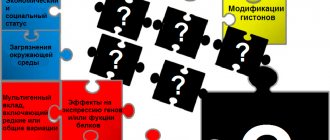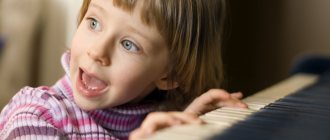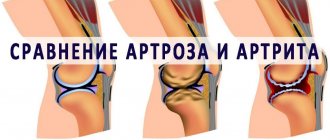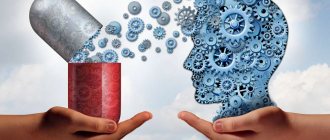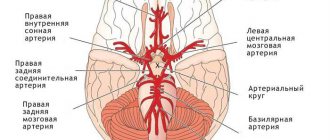The Diagnostic and Statistical Manual of Mental Disorders, 5th edition (DSM-5) defines autism spectrum disorder. It combines several diseases: Asperger's syndrome, childhood disintegrative disorder, PDD - pervasive developmental disorders. But in first place on the list of autism spectrum disorders is autism, in the context of which early childhood autism (ECA) is distinguished.
Classic autism
Autism is a disease whose core symptoms are impaired social interaction. That is, such a child has an absent or very poorly developed level of communication with others, and sometimes with close people.
Difficulties in communication manifest themselves both verbally and non-verbally. The child’s speech may be practically undeveloped or its accelerated development may be noted. He may have a huge vocabulary, but cannot engage in dialogue.
Nonverbal disorders are associated with difficulties in establishing visual contact, originality of postures, facial expressions, and gestures. An indicative criterion is the lack of empathy, that is, the ability to empathize with other people, understand their feelings, show care, compassion, be sad or rejoice with them.
The classic triad of RDA symptoms are:
- low level of social interaction, mutual communication;
- meager sphere of interests;
- stereotypical movements.
The disease manifests itself up to 3 years of age. Its first signs can be detected in the first year of life, but most parents attach importance to them when the child is 2 years old and older.
Signs of autism remain with a person throughout life to varying degrees. To date, scientists have not yet found a way to completely cure it.
Autism is associated with a disorder of the brain.
Research confirms that the development of the nervous system is influenced by the immune system even in the early stages of embryonic development, or, more precisely, by its insufficient function.
There is a theory that autistic individuals have an underdeveloped mirror neuron system. These cells are excited during motor activity, as well as when observing the activity of other people. For this reason, such people do not have the opportunity to adopt the behavior of others and monitor them.
Despite the large amount of research into the causes of the disease, the question of its nature remains open. Numerous theories reflecting on this problem do not provide a clear and complete answer.
Forecast
Autism is not as scary as it might initially seem, so parents should understand that if their child is diagnosed with this, he can grow up to be a full-fledged person, can successfully graduate from school and even start a family in the future. To do this, it is important to follow all the recommendations of specialists, create an atmosphere in the family favorable for the growth and development of the child, and provide proper care for him. It is also important to know the main symptoms of autism and carefully monitor the behavior of a child of primary preschool age in order to notice signs of such a nervous system disease in time and promptly seek help from a specialist.
Story
The concept of “autism” was first described in 1911 by Eugen Bleuler, but it was considered in the context of schizophrenia, as one of its symptoms. Translated from Latin, it means “abnormal narcissism.” With this term, the psychiatrist tried to indicate the patient’s withdrawal into his inner world, isolation from the intrusive interference of outsiders, and separation from reality. In its modern interpretation, it began to be used at the suggestion of Hans Asperger, after whom one of the autism spectrum disorders, Asperger syndrome, was named.
The concept of “early childhood autism syndrome” was introduced into psychiatry by Leo Kanner. In 1943, he introduced the term “autism” into a completely new context by describing the stories of 11 children and diagnosing them with infantile autism. He pointed out that this condition is markedly different from schizophrenia in children. In the picture of the disease, he noted the presence of symptoms such as stereotypical movements and echolalia. One of the variants of ASD, Kanner syndrome, was also named in honor of Leo Kanner.
Clinical picture
The main symptoms of RDA appear in infancy, in children in the first year of life. The following signs are noteworthy:
- late onset of babbling;
- smile little;
- do not fix their gaze on other people;
- lack of reaction in response to an adult’s appeal;
- do not respond to their own name;
- react sharply to weak stimuli, for example, minor noise, with strong negative emotions: crying, screaming, fear. But they react weakly to strong stimuli;
- After feeding, the baby does not express pleasure. There is no impression of a contented, satisfied baby.
Children with signs of autism have a perverted animation complex. This is the name of the emotional-motor response of a baby to the activity of an adult towards him. This simple form of behavior is formed by the end of the first month. It persists and intensifies until 4 months of age, and then disappears.
The structure of the revitalization complex includes the following components:
- prolonged fixation of gaze on an adult;
- smile addressed to the parent;
- verbal expression of emotions - cooing, humming, exclamations;
- motor reactions in the form of swinging arms and legs, head movements, and bending of the body.
In children with ASD, the reactions of the complex, as already mentioned, are perverted, very weakly expressed or completely absent. Such a child does not ask to be held, does not calm down when his mother takes him in her arms.
Another option is also possible, when the reactions of the revitalization complex are fully manifested, but not to an adult, but to any object, for example, a favorite toy or a pattern on wallpaper, a light bulb.
An autistic infant reacts poorly to parents and other loved ones, looks as if through them, does not express positive emotions in their presence, and does not come into contact with them. There is a disturbance in the baby's activity. Such children are called comfortable - they are too calm and undemanding.
As for motor development, it does not initially cause concern. All significant motor skills develop on time: independently holding the head, turning from back to stomach and back, sitting down. Children also begin to get up and walk on time, but there may be a time gap between walking with support and stomping independently—often it lasts up to six months.
In the further development of motor skills, the following tendency is observed: they are sluggish, unrhythmic, uncoordinated, characterized by stiffness, tightness and tension. Children often walk on their toes.
However, there are children with ASD, on the contrary, who are particularly nimble and flexible. They are very mobile. They tumble and easily climb heights. They keep their balance well. They say about these people: they can get through everywhere.
Autistic disorders: types
There are several types of autistic disorders, which differ in severity and form of manifestation, and therefore require different methods of correction.
Asperger's syndrome
This is a mild form of the disease. The first symptoms begin to appear at about 7 years of age. Features of a child who has been diagnosed with this form of the disease:
- has a fairly high level of intelligence;
- speaks clearly, but loudly, has problems with intonation;
- self-centered, refuses to compromise;
- takes uncharacteristic postures and walks awkwardly due to lack of coordination;
- gets fixated on one thing.
Provided that favorable conditions for development and upbringing are created, a child with Asperger syndrome will be able to live a normal life in the future. Along with his peers, he is able to graduate from school and university, start a family, and get a job.
Rett syndrome
This is a consequence of abnormalities in the female chromosome, so the disease can only appear in girls. Boys who receive such a chromosome die during pregnancy. This syndrome is considered a severe form of the disease and occurs approximately very rarely, 1 time in 10 thousand children. The manifestation of pathology is accompanied by the following clinical symptoms:
- After birth, the child develops fully within a year, after which obvious signs of mental retardation begin to appear sharply.
- The rate of head growth after a year is significantly reduced, and impaired coordination of movements develops.
- Complete lack of speech.
- The child withdraws into himself, completely isolating himself from the outside world.
- Skills acquired before the age of one are lost.
- The child often makes meaningless repeated movements with his hands, as if washing himself.
This is a severe form of the disease, which is practically impossible to correct, so when diagnosed, in most cases the prognosis is unfavorable.
Further development
By the end of the first year of life, it can be noticed that autistic children suffer from such a developmental component as joint activity between an adult and a child, which includes common experiences of pleasure and interest in joint activities and play.
Such kids have difficulty getting involved in joint activities. They find it difficult to connect emotionally with adults. It is significant when a child is pointed at an object with his hand, but he only looks at the hand; the object itself is uninteresting to him. For his part, he rarely points to an object on his own in order to share emotions. The pointing gesture is not formed or the child may point to something with an adult’s hand.
Because of this, children poorly develop such components of mutual coordination as following the parent’s gaze, imitating his behavior, and responding to his own name. The child does not respond to even the most banal request.
1 year is a crisis period in the life of all children. It is especially difficult for an autistic child. The possibility of independent movement leads to regression of even the slightest communications that took place.
In the baby's poses there is no request to pick him up, while healthy children at this age clearly demonstrate this with a familiar gesture: for example, they stop and extend their arms to the parent.
By the age of 3, children with ASD already have a clear formation of this syndrome. At the same time, the manifestation of negativism intensifies. Protest is expressed against innovations and attempts to organize their activities. For example, a child with autism resists changing the decor in his room. Everything must remain in its place with meticulous precision.
There is a lack of spontaneity in interacting with people. There is a paucity of emotions towards the other person. Imitative behavior is difficult.
A child with ASD falls into the power of his stereotypes. Monotonous, repetitive behavior is an important symptom in the picture of the disease. It can manifest itself in the form of repetitive movements. Such a special baby walks in a circle for a long time or sits in place, swaying back and forth, hangs upside down, jumps on outstretched legs. Stereotypical movements intensify at times of emotional stress or joy.
Ritual behavior is expressed in the daily repetition of monotonous actions. Perhaps this is folding clothes: they are arranged in a certain order and sequence.
Stereotypical behavior is characterized by acting according to certain rules. For children, this is most often arranging toys in a monotonous manner, for example, by size or in a row. They pay attention to small objects and love to play with matches, buttons, and mosaics. More primitive actions involve pressing on the eyeballs, making certain sounds, and manipulating paper.
Little autistic children also have a uniqueness of interests, expressed in fixation on one activity or object. The baby loves to eat from one specific plate. If he is offered other dishes, he refuses to eat. Or he has a favorite toy that should always be with him.
There is selectivity in food. Many products are rejected. At the same time, there is an overly picky attitude towards the dishes offered: the child takes them apart into pieces and sniffs them. On the other hand, there is a tendency to absorb inedible objects.
It should be noted that a child with ASD often finds himself in a dangerous situation. This is due to his involvement in stereotypical programs. For example: a child runs out onto a busy highway after seeing a car of a certain color and following it.
It is very difficult for little autistic children to master even basic self-care skills. All areas of the process suffer: coordination, orientation in space, holding a pose, repetition. The awkwardness intensifies especially when there is a positive attitude towards the activity and interest in it. In this case, the joint activity of the parent and the baby in the following mode helps a lot. The adult takes the baby's hands in his hands and begins to perform the manipulation with him from start to finish. Thus, after a series of repetitions, the child remembers the action pattern.
If an adult removes his hands at the wrong time and gives his child free reign, he may stop repeating the skill.
Signs of the fetus during pregnancy
The presence of autism in a fetus can be recognized during pregnancy. This can be noticed in the second trimester during an ultrasound examination. Scientists have proven that intensive growth of the fetal body and brain at the beginning of the second trimester suggests that the child will be born with autism.
The reason for such intensive growth may be the presence of serious infectious diseases in women: measles, chicken pox, rubella. Especially if the expectant mother suffered them in the second trimester, when the child’s brain is forming.
Speech, intelligence, worldview
Children with autism have impaired perception of the overall picture of the world. They analyze the object not as a whole, but divide it into details. They are interested in the car not as a form of transport, but only because its wheel moves.
Such children are not characterized by the desire to understand the world, study the properties of an object, its purpose. They choose attractive elements for themselves and follow them. Cognitive questions “why, why” lag in time.
Autistic children have a hard time getting interested in toys, but they focus on sensory stimuli. For example, a baby loves classical music so much that already at one year old he finds the right record in a stack and puts it in the player.
However, what is amazing is the ability of such children to remember what they, looking from the outside, do not pay attention to, hear what they do not listen to, see what they do not look closely at. When it is subsequently possible to establish verbal contact with them, the children talk about many things that, as it seemed, did not interest them.
As for memory, it can be said to be selective. They remember very well what is significant to them: the situation in the apartment, habits in the family, etc. Therefore, any violation of the routine causes indignation in them. Children are also good at remembering events that made them feel afraid.
A special feature of little autistic children is mechanical memory. They perfectly remember poetry, reproduce complex drawings and songs.
The speech of autistic children also has its own characteristics. In infancy, they are not characterized by humming and babbling. They appear very late. The first words are spoken on time, but these are not the usual “mother”, but completely different words that are not used for direct communication.
Many children's speech is either very poor, with a small vocabulary, or practically not developed at all. They hum, smack, and speak their own language. The words are incoherent and may use expressions taken from the cartoons they have watched.
Echolalia is observed - repetition of words addressed to the autistic person. Sometimes very complex expressions are repeated, but purely automatically, without understanding the meaning. There is a reversal of pronouns; when a child with ASD is asked what your name is, he answers: “Your name is Petya.”
The meaning of the speech of an autistic child is understandable only to close people, since he operates with abstract concepts. For example, when mom is angry, she answers her: “Have mercy, madam.”
Even if the baby’s speech is quite well developed, and his vocabulary is very rich, he is still incapable of dialogue. He speaks only about what interests him, in the form of a monologue, while the intonation of his statements suffers.
Autistic people easily learn foreign languages. But, as teachers note, they also master their native language as a foreign one.
In general, speech with RDA is also stereotypical. It is often incomprehensible to others, as it expresses the personal interests of its bearer. Spontaneous speech used in communication is poorly developed; children better perceive indirect speech addressed to others. They can speak clearly and without hesitation, using complex expressions, in the form of a monologue or echolalia, but they stumble, get confused and speak blurredly when trying to start a dialogue.


